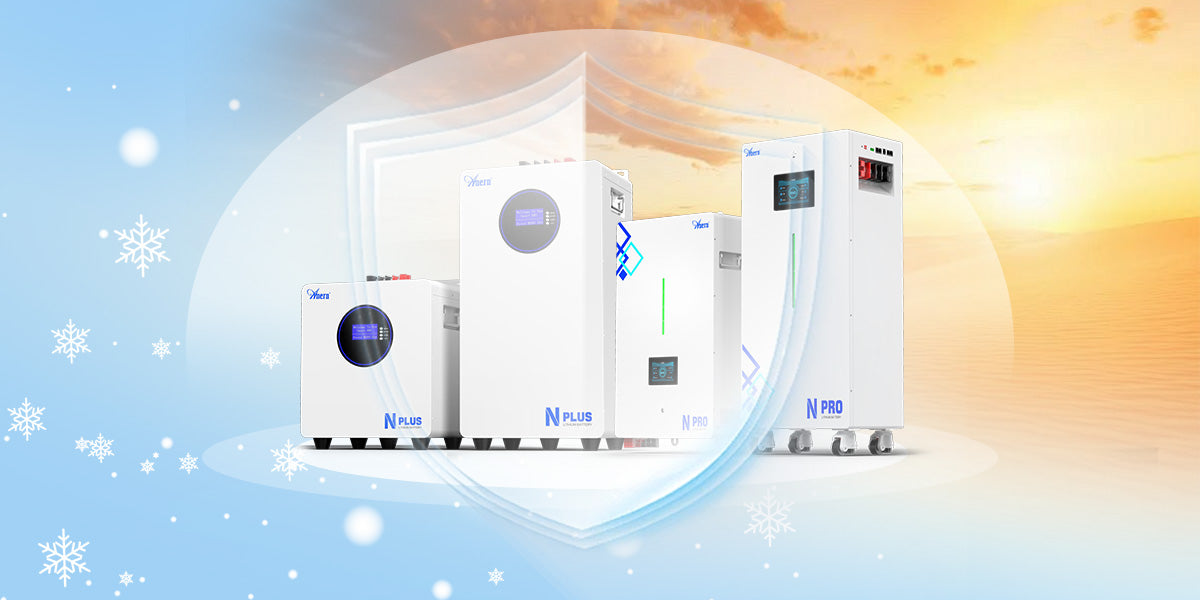Developing a Lithium Iron Phosphate (LFP) Energy Storage System (ESS) requires a deep understanding of international standards. These regulations are not just bureaucratic hurdles; they are fundamental frameworks for ensuring safety, reliability, and performance. Two of the most critical standards in this domain are IEC 62619 and IEC 62933. Applying them correctly is essential for creating a product that is both marketable and safe for end-users. This article provides a clear path for integrating these standards into your LFP ESS design process.
Understanding the Core Standards: IEC 62619 and IEC 62933
To design a compliant LFP ESS, you must first recognize the distinct roles of IEC 62619 and IEC 62933. They are not interchangeable. Instead, they work together to provide comprehensive coverage from the individual battery cell to the complete, grid-connected system.
IEC 62619: The Foundation of Battery Safety
IEC 62619 specifies the safety requirements for secondary lithium cells and batteries used in industrial applications. This standard is the bedrock of your ESS safety strategy. It focuses on the battery pack itself, ensuring it can withstand various fault conditions without catastrophic failure. Key tests mandated by IEC 62619 include:
- Internal short circuit
- Thermal runaway propagation
- Overcharge and over-discharge protection
- Mechanical shock and vibration
Compliance demonstrates that the battery system has robust built-in protections, a critical first step in the overall safety assessment.
IEC 62933: The System-Level Framework
While IEC 62619 focuses on the battery, the IEC 62933 series addresses the entire Electrical Energy Storage (EES) system. This broader scope covers planning, installation, safety operations, and performance testing of the complete system. As noted in the IRENA report, Quality infrastructure for smart mini-grids, standards like IEC 62933-5-2 are crucial for addressing safety concerns related to large-scale battery installations in populated areas. It ensures all components—including the inverter, Battery Management System (BMS), thermal management, and enclosures—work together safely.
Key Differences and Synergies
The relationship between these two standards is hierarchical. A system cannot be fully IEC 62933 compliant without using components, like batteries, that meet their own foundational safety standards, such as IEC 62619. Think of it as building a house: IEC 62619 ensures the bricks are strong, while IEC 62933 ensures the entire house is structurally sound and safe to live in.
| Aspect | IEC 62619 | IEC 62933 |
|---|---|---|
| Scope | Secondary lithium cells and batteries | Complete Electrical Energy Storage (EES) systems |
| Focus | Component-level safety (the battery) | System-level safety, performance, and grid integration |
| Primary Goal | Prevent internal failures and thermal runaway propagation | Ensure safe and reliable operation of the entire integrated system |
Mapping IEC 62619 Requirements to LFP ESS Design
Translating IEC 62619 into your LFP ESS design involves specific engineering choices at the cell, module, and pack level. The inherent chemical stability of LFP provides a significant advantage in meeting these requirements.
Cell and Module Level Safety
Your BMS is the first line of defense. It must be designed to prevent conditions that could lead to cell damage. This involves precise monitoring and control of:
- Voltage: Implementing strict cut-offs to prevent overvoltage during charging and undervoltage during discharging.
- Current: Incorporating protection against overcurrent during both charge and discharge cycles.
- Temperature: Using multiple sensors to monitor cell temperatures and trigger protective measures if they exceed safe operating limits.
A well-designed BMS directly addresses many of the functional safety requirements outlined in IEC 62619.
Thermal Runaway Mitigation
LFP chemistry is far less prone to thermal runaway than other lithium-ion chemistries. However, the standard requires that if one cell fails, it does not cause a cascading failure of the entire pack (propagation). Design strategies to achieve this include:
- Physical separation between cells and modules.
- Use of heat-resistant barriers or insulating materials.
- An active thermal management system to dissipate heat effectively.
- A BMS that can detect an impending cell failure and isolate the affected area.
Integrating IEC 62933 for System-Level Compliance
With a safe battery pack as your foundation, the next step is to ensure the entire ESS is compliant with the IEC 62933 series. This moves the focus from the component to the complete, integrated product.
System Safety and Risk Assessment (IEC 62933-5-2)
This part of the standard requires a comprehensive risk assessment of the entire ESS. You must identify potential hazards and implement mitigation measures. This analysis goes beyond the battery and includes:
- Inverter Safety: Ensuring the power conversion system has proper fault protection.
- Thermal Management: Verifying that the cooling system can handle maximum operational loads and fault conditions.
- Enclosure Integrity: Designing an enclosure that meets appropriate IP ratings for environmental protection, as specified in standards like IEC 60529, and can contain potential internal events.
- Fire Suppression: If applicable, integrating a fire detection and suppression system that is compatible with lithium-ion battery incidents.
Performance and Grid Integration
Compliance is not just about safety; it is also about performance and reliability. As explained in the IRENA report Grid Codes for Renewable Powered Systems, international standards are often referenced in local grid codes that dictate how a system can interact with the utility grid. IEC 62933-2-1 provides a framework for defining and testing key performance parameters. To ensure your system delivers on its promises, it's vital to measure metrics like round-trip efficiency, response time, and usable capacity. A deep dive into these metrics, as found in resources like the ultimate reference on solar storage performance, can help you benchmark your system against industry expectations and ensure it meets the operational requirements for grid support or self-consumption applications.
Communication and Control
A modern ESS must communicate effectively with other devices and network operators. IEC 62933 acknowledges this by referencing communication protocols. The system's control unit should be able to receive commands, report its status, and operate as part of a larger energy management ecosystem, using standardized protocols for telecontrol tasks as mentioned in standards like IEC 60870.
A Practical Blueprint for Compliance
Achieving compliance with both standards requires a structured approach. A simplified workflow looks like this:
- Foundation First: Select LFP cells and modules that are already certified or tested according to IEC 62619. This significantly de-risks the project.
- Build the Pack: Design the battery pack, including the BMS and mechanical structure, to fully meet all IEC 62619 requirements.
- System Integration: Integrate the compliant battery pack with the inverter, thermal management, and other balance-of-system components.
- Holistic Risk Analysis: Conduct a system-wide risk assessment as required by IEC 62933-5-2. Identify and mitigate all potential hazards.
- Performance Verification: Test the complete ESS according to the procedures in IEC 62933-2-1 to validate its performance characteristics.
- Documentation: Maintain meticulous records of all design choices, test results, and risk assessments. This documentation is crucial for the final certification process.
Achieving Robust and Reliable Design
Mapping IEC 62619 and IEC 62933 into your LFP ESS design is a non-negotiable process for any manufacturer aiming for global market access. By treating IEC 62619 as the safety foundation for the battery and IEC 62933 as the comprehensive framework for the entire system, you create a clear and logical path to compliance. This dual-standard approach not only results in a safer product but also builds trust with installers, regulators, and end-users, ultimately paving the way for a more reliable and resilient energy future.
Disclaimer: This article provides general information and is not a substitute for professional engineering or legal advice. Always consult the latest versions of the standards and work with certified testing laboratories.
Frequently Asked Questions
What is the main difference between IEC 62619 and IEC 62933?
IEC 62619 focuses specifically on the safety of the lithium-ion battery pack itself, covering aspects like thermal runaway and internal short circuits. IEC 62933 has a much broader scope, addressing the safety, performance, and grid integration of the entire energy storage system, which includes the battery, inverter, and all control systems.
Is IEC 62619 certification sufficient for an entire energy storage system?
No, it is not. IEC 62619 certification is a critical starting point that applies only to the battery component. A complete energy storage system requires further assessment and compliance with the relevant parts of the IEC 62933 series to be considered safe and ready for grid connection.
How does LFP chemistry simplify compliance with these standards?
LFP (Lithium Iron Phosphate) chemistry is inherently more thermally stable than other common lithium-ion chemistries like NMC or NCA. This stability makes it significantly easier to meet the stringent safety requirements of IEC 62619, particularly the thermal runaway propagation test, leading to a safer overall system design.





Leave a comment
All comments are moderated before being published.
This site is protected by hCaptcha and the hCaptcha Privacy Policy and Terms of Service apply.